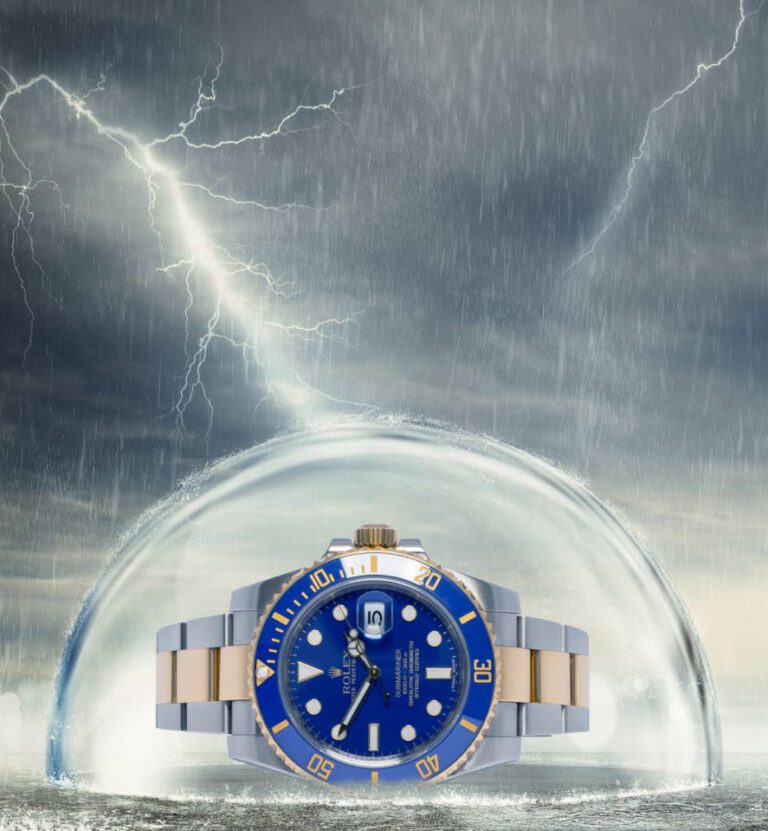WHAT IS THE RIGHT TIME HORIZON FOR AN INVESTMENT WATCH?
The short answer is five years plus. You can easily “flip” watches in the short term, with a small profit, but you are at the mercy of the market in terms of price and shelf life if you invest in the short term. For the past two years, most of the market has been in a correction from the unprecedented and unsustainable surge. As mentioned earlier, this was caused by a perfect storm of negative interest rates, the need to place assets during the invasion of Ukraine, and, not least, extra savings in connection with the Covid lockdown.
PRICE DEVELOPMENT FOR TOP WATCH BRANDS
If we look at Rolex watches as a benchmark over five years, collectively in three years (from mid-2019 to 2022), on average, they increased by 90%. For the next two years (from mid-2022-2024), the watches have now stabilized at a total profit of 28%.
Looking a little higher up the “luxury list” (lower supply and better craftsmanship), the same picture applies to, e.g., Patek Philippe and Audemars Piguet. Here, the exclusive brands collectively increased an average of 145-155% after the first three years, and after the correction of the last two years, they have now stabilized at a profit of “only” 55-65%.
If we look down the “luxury list” (higher supply), we find brands such as Omega and Cartier. They peaked after three years at 21% and 31% respectively. That is, they haven’t skyrocketed with the luxury brands, but even after the biggest correction in living memory, you’re left with a profit of 16-17% over 5 years.

RISK PROFILE OF THE INVESTMENT
So, how should you feel about investing your money when you have acquired a portfolio with UrHandleren Invest? We clarify this in the start-up phase when we map out the time horizon and risk profile. Because no two investors are the same, some want to allocate the primary amount of their cash to watches. Here, we recommend a diversified portfolio with many watches – just like stocks. However, most people want to diversify their existing portfolio, which for many years has been composed of stocks and bonds according to risk profile. As you can see from the above graph and brand examples, it is also possible to steer the risk profile towards where you want to be in the market. It may also be time to reassess risks based on how overbought stocks, gold, and similar asset classes are
Of course, we can’t risk moving in the market like choosing an overbought growth stock with multiples that may/may not justify a staggering p/e value, a stable dividend stock, bond, or similar, but these are some good considerations that can be factored into the overall risk profile. We have hundreds of other parameters by which we choose to buy watches. These include availability, supply volume, trends, history, material, estimated time frame until the model is taken out of production, and much much more. However, at the time of writing, it is easier to offer a more attractive risk/reward ratio than two years ago. The same can’t be said for most portfolios.
Right now, you can buy several Rolex models that are impossible to get on the waiting list for, resting historically close to the asking price. If we calculate Rolex’s 4% annual average price increases, the asking price will be +21% higher in five years. Assuming they don’t raise prices even more due to higher inflation, production costs, and the collector models going out of production. However, our crystal ball says that they will increase further.

DEMAND IS RISING
Looking ahead five years, there are many reasons to invest in luxury watches, but overriding them all is the ratio of supply to demand that continues to grow apart. If you read Frank Knight’s 2024 wealth report, for example, you can see the UHNWI (Ultra-High-Net-Worth-Individuals; people with assets of more than DKK 210 million) increases by +28% towards 2028. In fact, we estimate that the growth in India alone can absorb Rolex’s planned controversial additional production. In a survey of managers of +600 UHNWI assets worth + USD 3 trillion (that’s a number you might want to read twice), 42% globally cite watches as a passion investment.
Unsurprisingly, much of the growth in UHNWI comes from the Middle East, with 67% investing in watches and only 13% in whiskey, as alcohol is not so popular locally. So, there are many macro trends that speak to the scarcity of luxury watches. For example, a favorite of the wealthy, Audemars Piguet, only makes 51,000 watches a year. You could also look at Richard Mille, who makes 5,600, or F.P. Journe, who makes 1,800 watches a year, and then remember that over the next 5 years, an estimated 200,000 new members will join the UHNWI club. In addition, some people buy a watch before they have 210 million in the bank…
What is the time horizon of a watch as an investment? Only you know, but having the right watches over time is common sense, when time is money.

We will keep you updated
Subscribe to our mailing list where we send exciting news and good experiences from our everyday life.